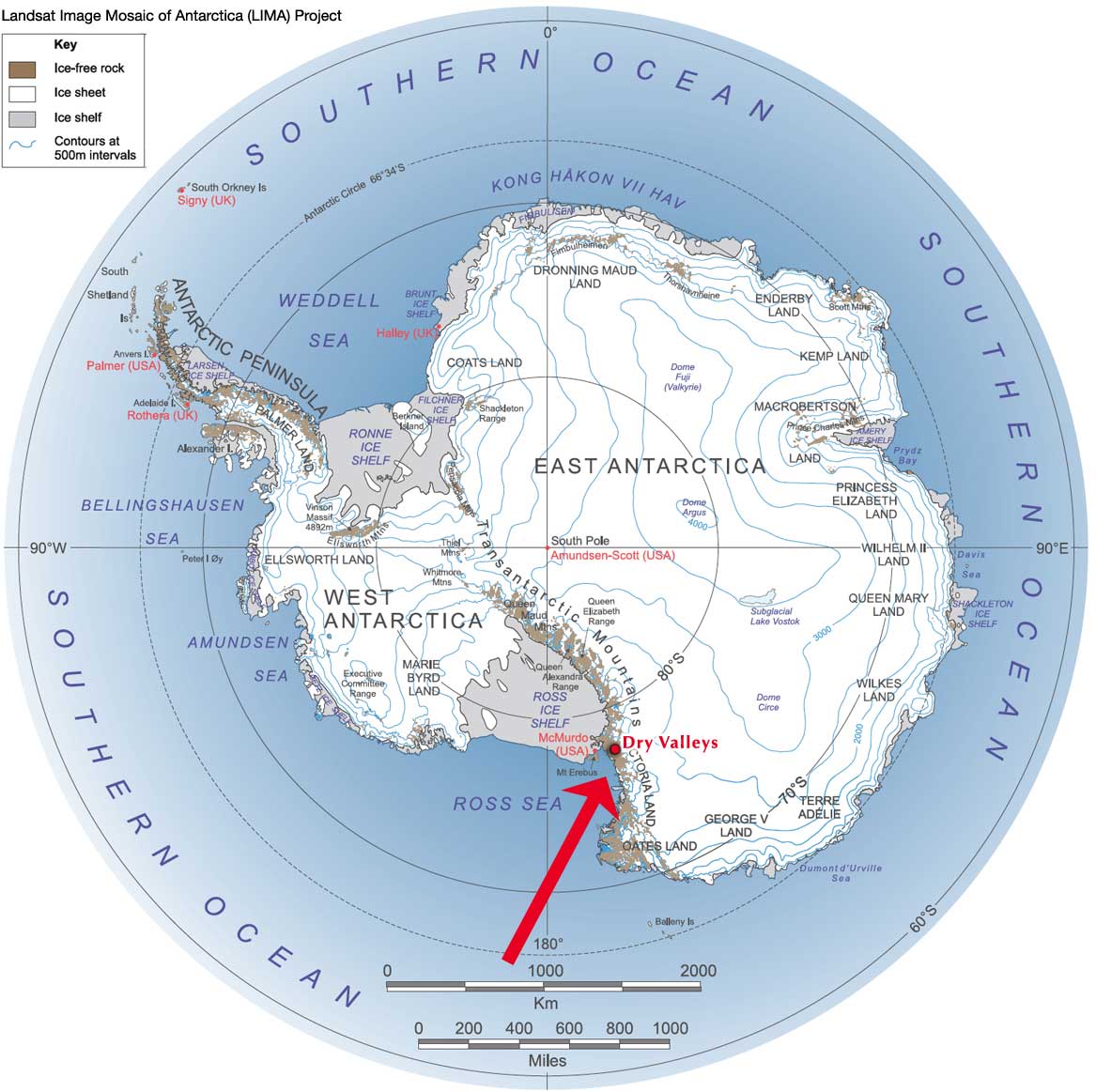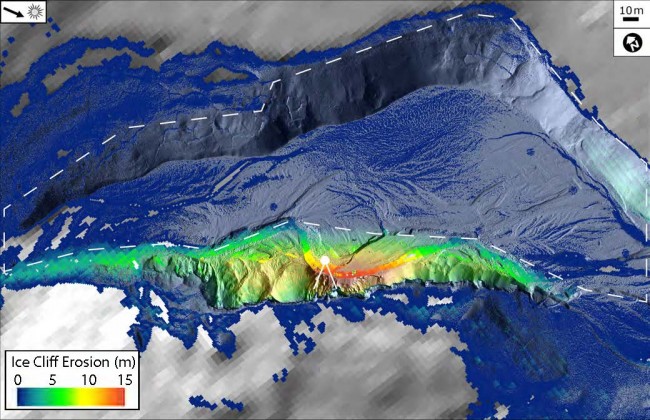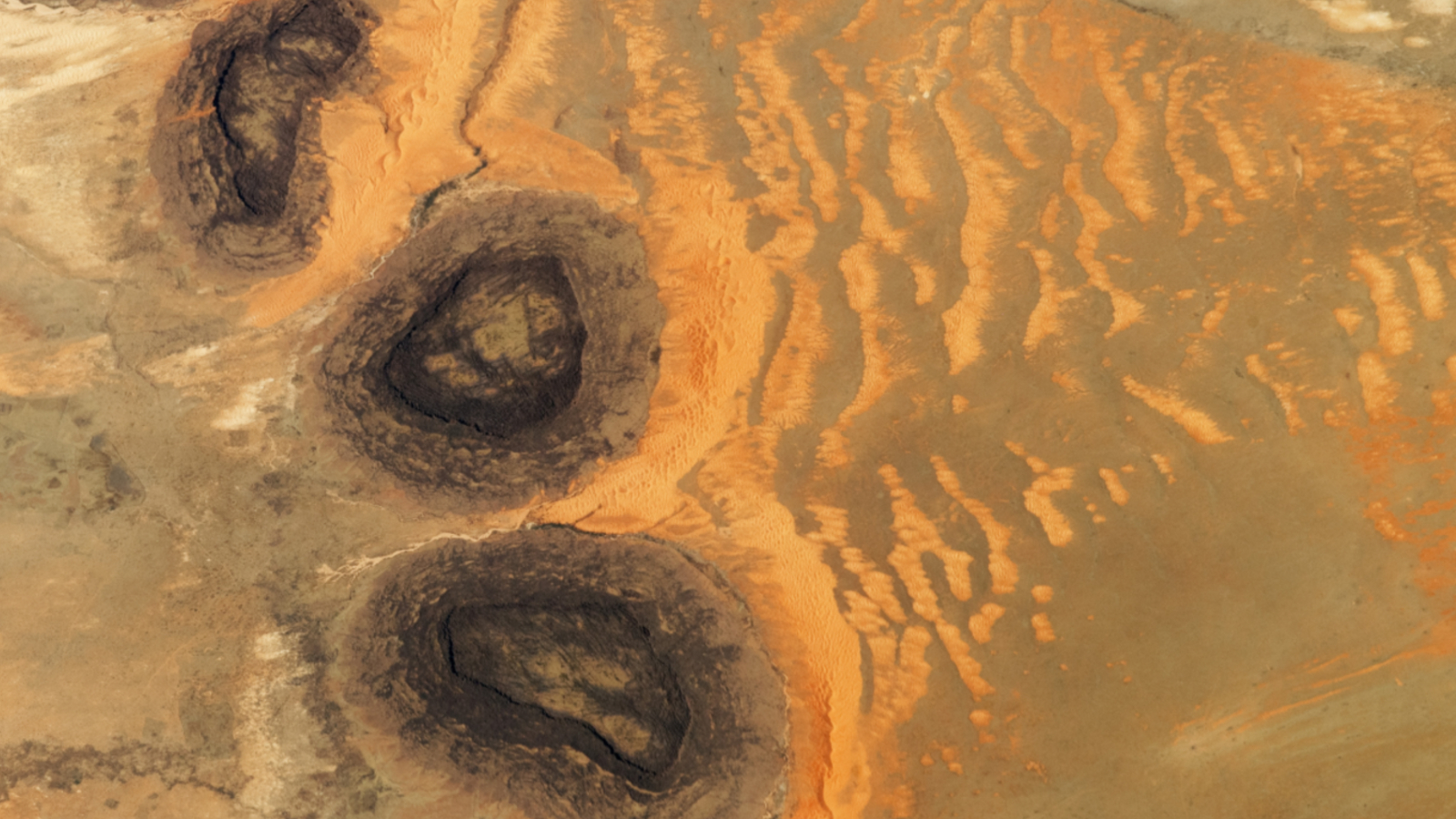Melting Permafrost Found in Antarctica's Dry Valleys

Antarctica's Dry Valleys are home to the oldest ice on Earth. The first signs of the massive thaw disturbing the Arctic's frozen ground have now appeared in one of these valleys, melting a glacier buried since the last Ice Age.
The Dry Valleys are different from the rest of Antarctica. Their ice, some of which is millions of years old, is buried under scoured boulders and dust as fine as flour. The arid landscape looks like Mars and, until now, hadn't changed much since the continent froze about 15 million years ago.
"The Dry Valleys range from being somewhat stable to extremely stable in terms of landscape," said Joseph Levy, a research associate at the University of Texas at Austin's Institute for Geophysics.
But in 2009, Levy said, helicopter pilot Dustin Black spotted a new feature in Garwood Valley, one of the Dry Valleys near McMurdo Research Station where he ferries scientists to and from research camps. "I discovered this huge chunk of buried ice that was beginning to melt," Levy told LiveScience. "It was changing, and changing fast." [Images of Melt: Earth's Vanishing Ice]
The melting ice is a stranded glacier, buried under lake and river sediments for at least 7,000 years. In the past few years, the thawing ground has formed a 50-foot-tall (15 meters) ice cliff that's retreated by 30 feet (10 m), according to a study led by Levy published today (July 24) in the journal Nature Scientific Reports. The thawing ground is melting as quickly as Arctic permafrost, Levy said. Permafrost, or permanently frozen ground, covers about 25 percent of the Northern Hemisphere, and some is thawing in warming regions.
A crumbling ice cliff
"We're seeing the first Arctic-style change to the permafrost in Antarctica, and it's exciting and a little bit scary," Levy said. "The Dry Valleys are host to a lot of very special climate records, and when the ice melts, it's like someone going into a laboratory and breaking all of your experiments."
Get the world’s most fascinating discoveries delivered straight to your inbox.
The unique Dry Valley ecosystem — which has adapted to the harsh, dry climate —could also be affected by the sudden influx of meltwater, Levy said.
In 2001, the study's baseline, about 2,800 cubic feet (80 cubic meters) of ice and sediment melted out of the buried glacier, the researchers found. Between January 2011 and January 2012, more than 388,000 cubic feet (11,000 cubic m) of the ice cliff disappeared.
"You can see giant blocks calving off and tumbling down the cliff," Levy said.
Before the discovery, scientists thought the Dry Valleys were a sea of stability in the rapidly changing polar regions — seasonal freeze and thaw cycles neither added nor took away from the underlying permafrost. And unlike regions of Antarctica that are warming, temperatures in the Dry Valleys stayed the same or cooled in the past 20 years.
The sun shines in
But in their search to explain the sudden melting in Garwood Valley, Levy and his colleagues found one weather shift in the valley. For still-unknown reasons, the U-shaped gorge is baking under more intense sunlight. Weather stations record increased sunlight in the valley in recent years, which means more solar radiation is heating the thin, dark blanket of dirt on top of the frozen ground. The ice is effectively cooking underneath.
"Right now, we have the observations that we are getting more sunshine reaching the ground, but we don't have a good model as to why," Levy said.
He added that it's unlikely that all of Antarctica's Dry Valleys will start melting to the extent seen in Garwood Valley. Some have thicker sediment layers that insulate permafrost, instead of absorbing and transmitting heat. "There are parts of the deep interior Dry Valleys that seem very resistant to melting," Levy said.
The researchers plan to return to the Dry Valleys to conduct additional studies that will gauge how much future melting to expect from a predicted rise in local temperatures by the end of this century. "The ice cliff is kind of our crystal ball for the rest of the Dry Valleys," Levy said.
Email Becky Oskin or follow her @beckyoskin. Follow us @livescience, Facebook & Google+. Original article on LiveScience.com.



